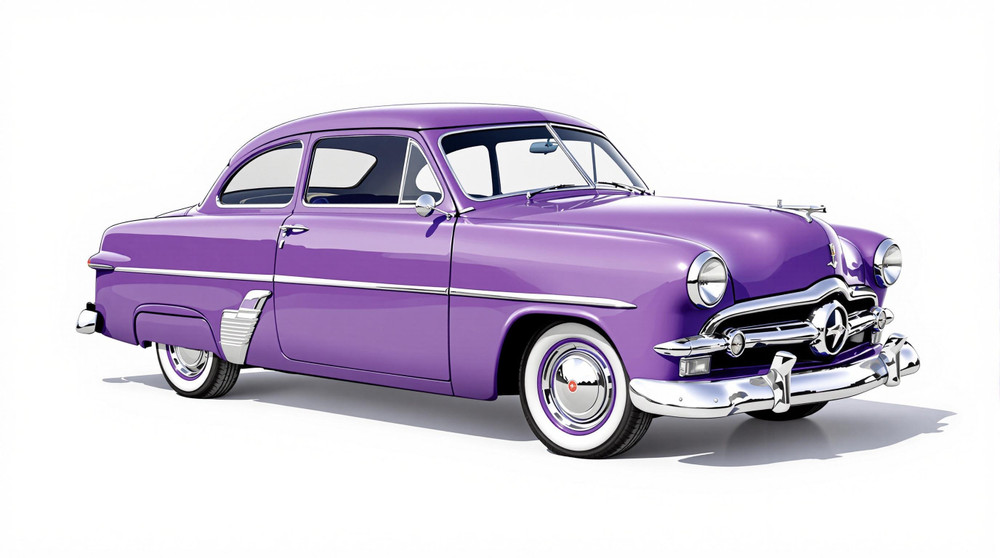Image of 1952 Ford Mainline, Note: These illustrations use artistic license and may differ from actual historical models.
Performance Metrics
Fundamental Metrics
Emotional Appeal
MMP Rating
| Engine Specifications | |
|---|---|
| Engine: | Ford Flathead V8 |
| Displacement: | 239 cu in (3.9 L) |
| Horsepower: | Estimated 100-110 hp |
| Torque: | 193 lb-ft |
| Compression Ratio: | Estimated 6.8:1 |
| Ignition System: | Distributor and coil |
| Cooling System: | Water-cooled |
| Performance Specifications | |
| 0-60 Time: | Estimated 15-20 seconds |
| 1/4 Mile Time: | Not available |
| Top Speed: | 80-85 mph |
| Transmission and Drive | |
| Drive Type: | Rear-wheel drive |
| Transmission Type: | 3-speed manual |
| Fuel and Efficiency | |
| Fuel System Type: | Carburetor |
| MPG: | Estimated 15-20 mpg |
| Dimensions and Brakes | |
| Brakes: | Drum brakes |
| Wheelbase: | 115 inches |
| Weight: | Estimated 3,200 lbs |
Note: Specifications for classic cars are given to the best of our ability, considering the limited and variant data available.
1952 Ford Mainline: A Testament to Post-War Ingenuity
The 1952 Ford Mainline stands as a beacon of American automotive resilience, emerging from the shadow of World War II to redefine simplicity and reliability in an era of change. Born from the assembly lines of the Ford Motor Company, this vehicle not only captured the hearts of post-war consumers but also heralded a new age of design and practicality. With its no-frills approach, the Mainline was a unique offering that provided a glimpse into the future of personal transportation. A notable moment in its history was when it became one of the first cars to receive Ford's milestone innovation—the Ford-O-Matic automatic transmission—ushering in a new level of driving ease.
Design and Innovation
The exterior styling of the 1952 Ford Mainline was a harmonious blend of function and modest elegance. Its chrome grille, modest tail fins, and round headlamps were signatures of its time, exuding a sense of robustness and durability. Inside, the Mainline was purposeful with its utilitarian dashboard and durable upholstery, prioritizing longevity over luxury. Despite this, Ford did not skimp on quality; materials were chosen for their ability to withstand daily wear and tear.
Technologically, the Mainline was ahead of its time with features like the aforementioned Ford-O-Matic transmission and advancements in heating and ventilation systems. Color options ranged from Raven Black to Sea Island Green, with Niagara Blue often catching the eye of mid-century buyers. The Mainline came in various body styles including sedans, coupes, and business coupes, but it was the two-door sedan that became emblematic of this model's utilitarian charm.
Historical Significance
The 1952 Ford Mainline's impact on automotive design was subtle yet profound. It set a precedent for affordable post-war vehicles that didn't compromise on functionality or reliability. Its straightforward design philosophy influenced generations of cars that followed, emphasizing that quality need not be sacrificed for cost-effectiveness.
Performance and Handling
With a top speed that could reach upwards of 80 mph and an acceleration from 0-60 mph in a modest range for its time, the Mainline wasn't built for speed but for steady cruising. The ride was known for being smooth despite less sophisticated suspension systems than we have today. Drivers often reported a sense of connection with the machine—a symphony composed by the hum of its inline-six or optional V8 engine, the solid feel of the steering wheel, and the road's feedback through its bench seat.
Ownership Experience
The 1952 Ford Mainline served faithfully as a daily driver for many families while also finding its place in car shows due to its classic lines and historical value. Its mechanical simplicity made maintenance manageable for the average owner. However, like many vehicles of its era, rust could be an issue if not properly cared for.
Fun Facts
This unassuming hero may not have been graced by celebrity ownerships like some of its flashier contemporaries; however, it did set sales records for Ford at the time. Criticisms were few but often pointed towards its conservative styling which lacked the pizzazz found in competitors' offerings.
Collector's Information
Today, a well-preserved 1952 Ford Mainline can fetch anywhere from $10,000 to $30,000 depending on condition and originality. While exact production numbers are elusive, it's estimated that hundreds of thousands were produced. As appreciation for post-war classics grows, values are slowly on the rise.
Conclusion
The 1952 Ford Mainline may not have been designed as a showstopper but became an unsung hero in automotive history through its dependability and straightforward charm. This car is more than just metal, rubber, and glass—it's a slice of Americana that continues to captivate enthusiasts around the globe.
1952 Ford Mainline Catalog of Parts
 1952 Ford Mainline Spring and Shackle Bushing. 7/8" bottom O.D-BN 19Spring and Shackle Bushing. 7/8" bottom O.D. X 1-1/4" high, with 1/2" I.D. Each
1952 Ford Mainline Spring and Shackle Bushing. 7/8" bottom O.D-BN 19Spring and Shackle Bushing. 7/8" bottom O.D. X 1-1/4" high, with 1/2" I.D. Each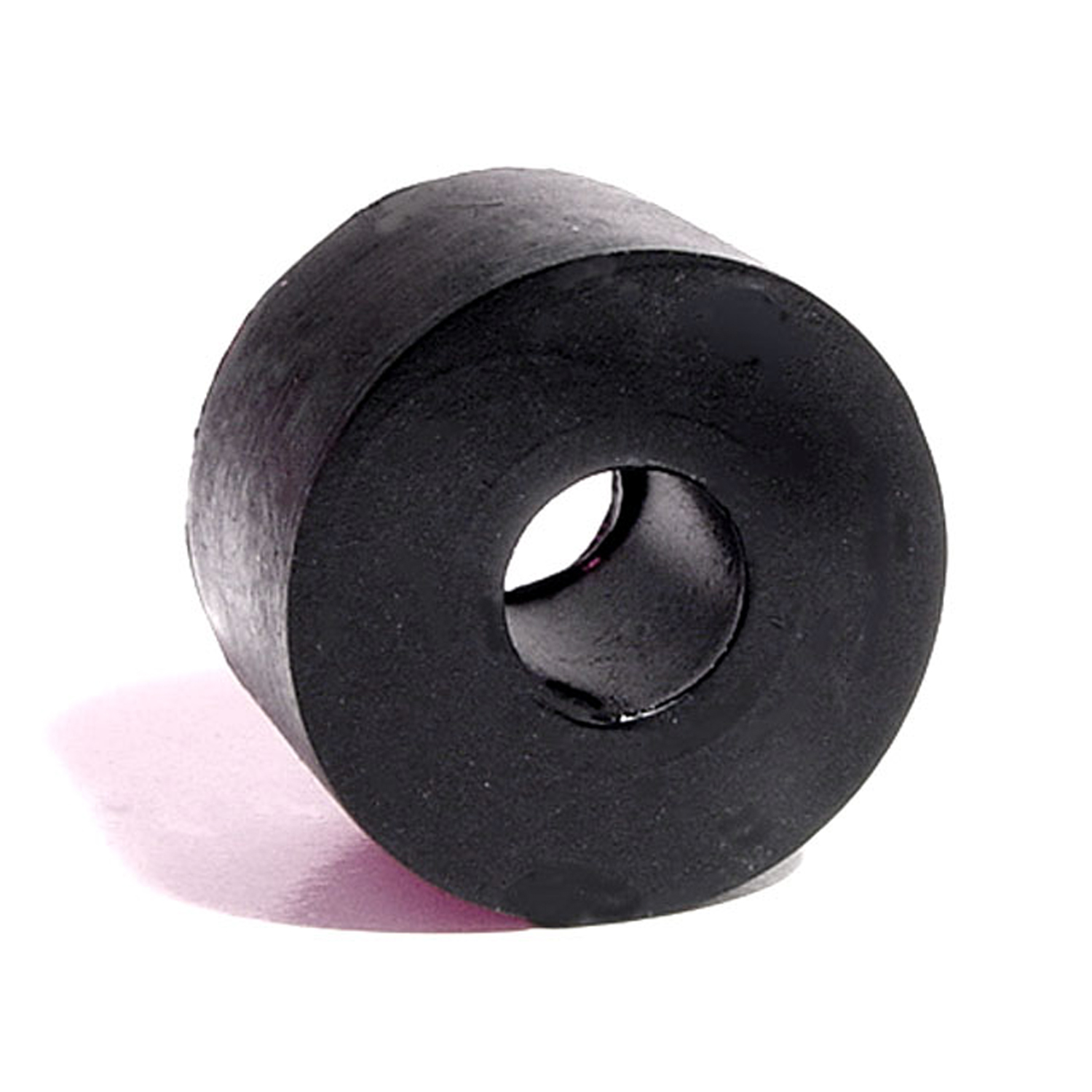 1952 Ford Mainline Shock Absorber Grommet. 1" bottom O.D-BN 6Shock Absorber Grommet. 1" bottom O.D. X 1/2" high, with 3/8" I.D. Each
1952 Ford Mainline Shock Absorber Grommet. 1" bottom O.D-BN 6Shock Absorber Grommet. 1" bottom O.D. X 1/2" high, with 3/8" I.D. Each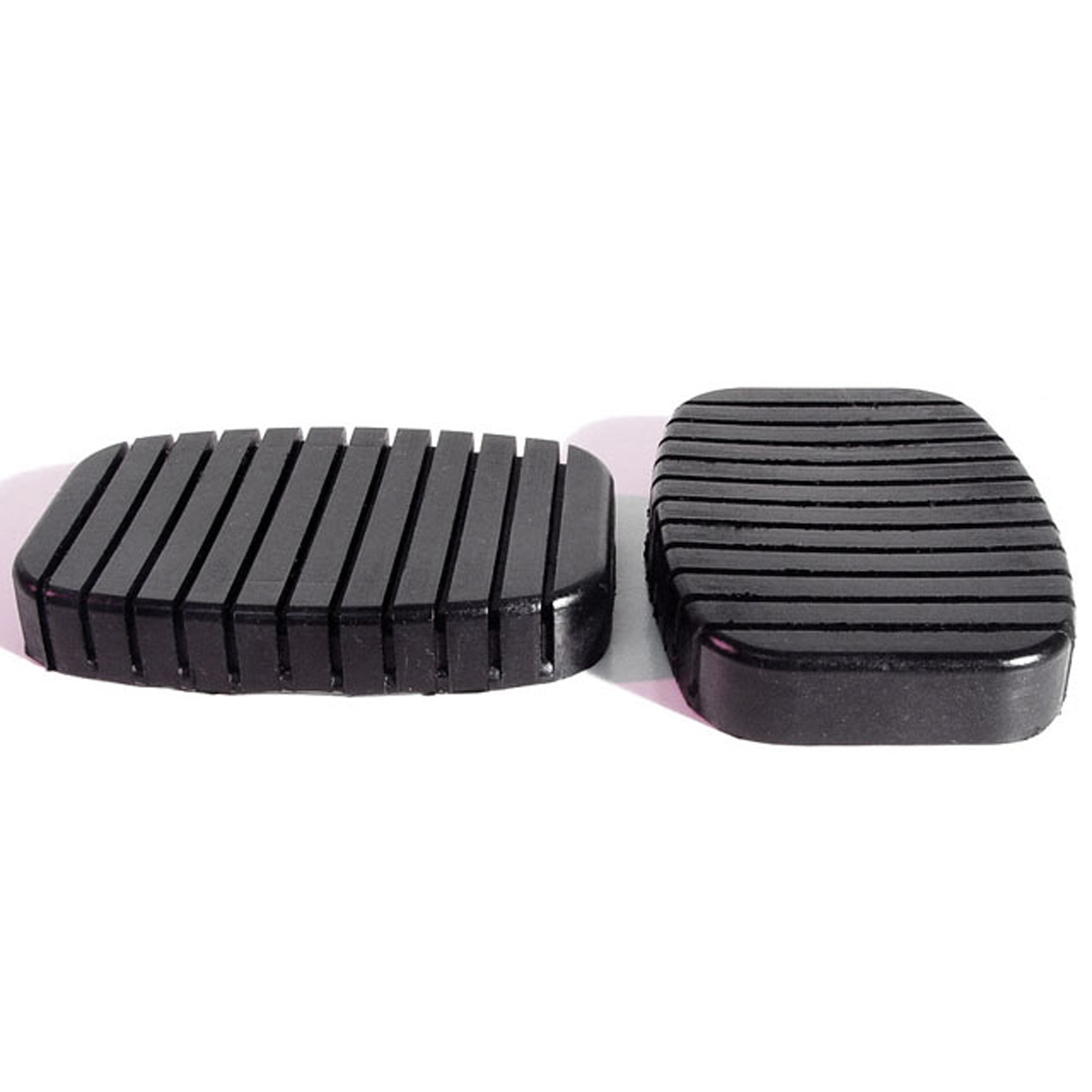 1952 Ford Mainline Clutch and Brake Pedal Pads-CB 90-BClutch and Brake Pedal Pads. For models with standard transmission. 2-1/4" wide X 3-1/4" long. Pair
1952 Ford Mainline Clutch and Brake Pedal Pads-CB 90-BClutch and Brake Pedal Pads. For models with standard transmission. 2-1/4" wide X 3-1/4" long. Pair 1952 Ford Mainline Brake Pedal Pad. Correct reproduction of a difficult part-CB 90-CBrake Pedal Pad. Correct reproduction of a difficult part. 2-1/2" wide X 4-1/2" long. Each
1952 Ford Mainline Brake Pedal Pad. Correct reproduction of a difficult part-CB 90-CBrake Pedal Pad. Correct reproduction of a difficult part. 2-1/2" wide X 4-1/2" long. Each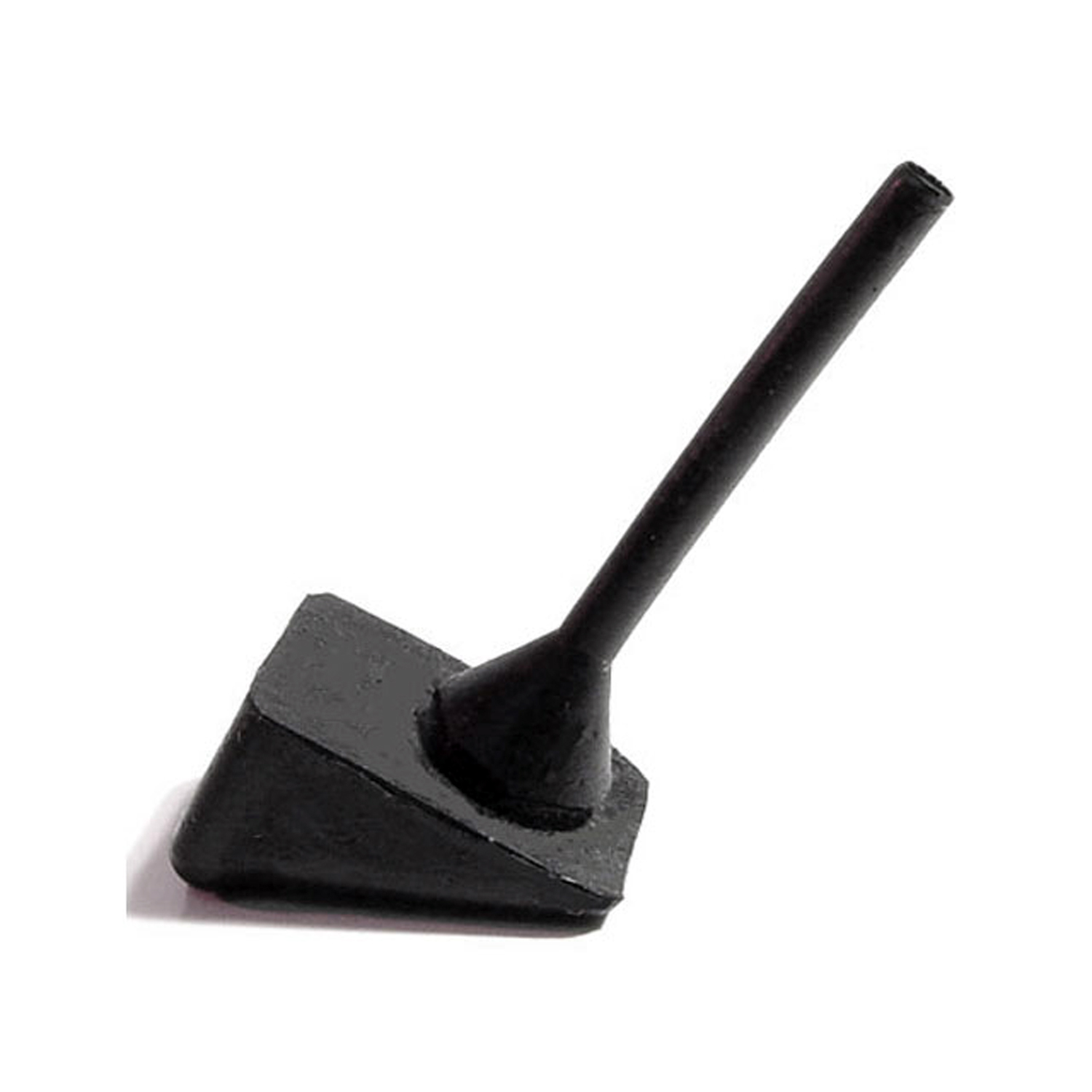 1952 Ford Mainline Hood Bumper. Each-HF 8Hood Bumper. Each
1952 Ford Mainline Hood Bumper. Each-HF 8Hood Bumper. Each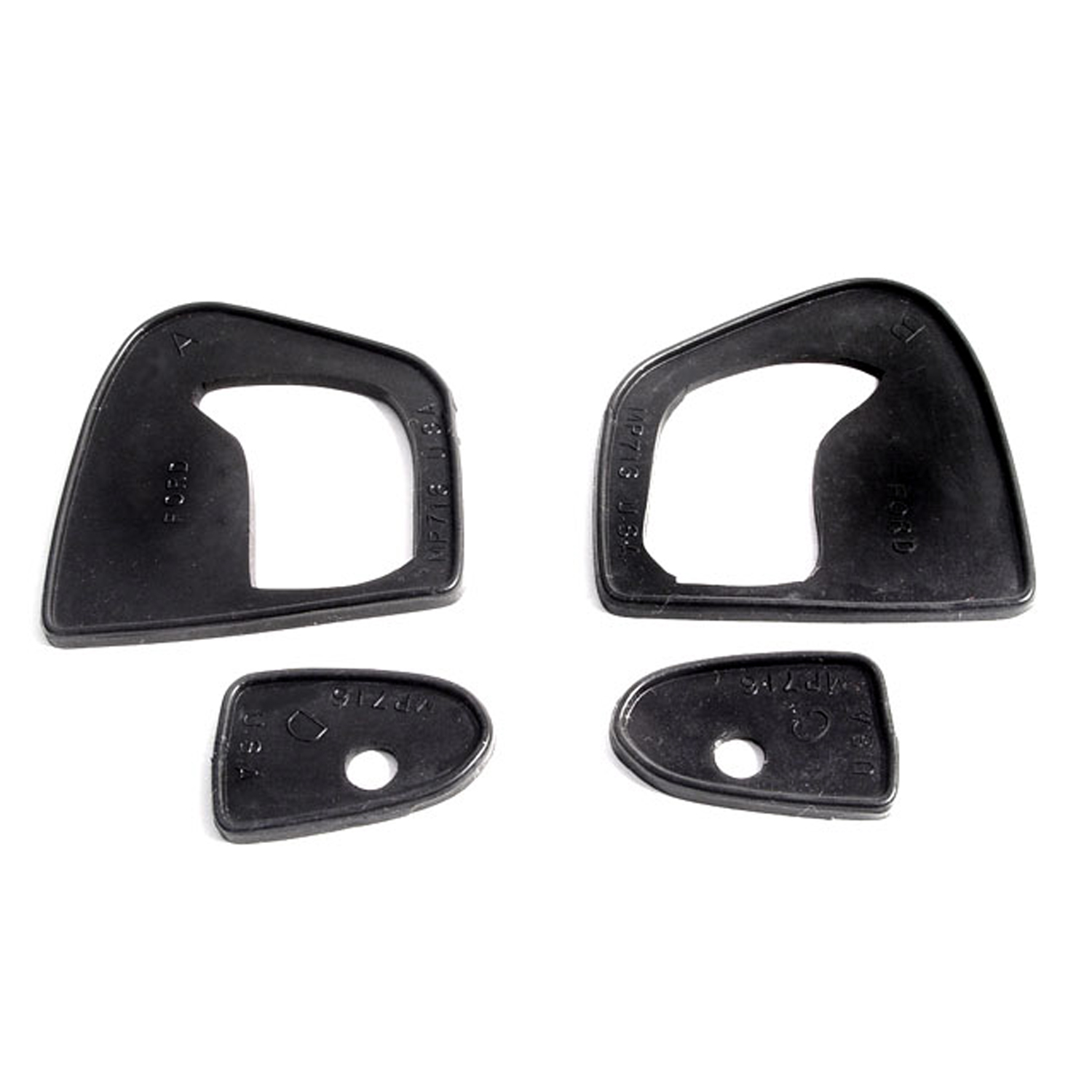 1952 Ford Mainline Door Handle Pads. 2-1/2" long & 1-1/2" long. Set R&L-MP 716Door Handle Pads. 2-1/2" long & 1-1/2" long. Set R&L
1952 Ford Mainline Door Handle Pads. 2-1/2" long & 1-1/2" long. Set R&L-MP 716Door Handle Pads. 2-1/2" long & 1-1/2" long. Set R&L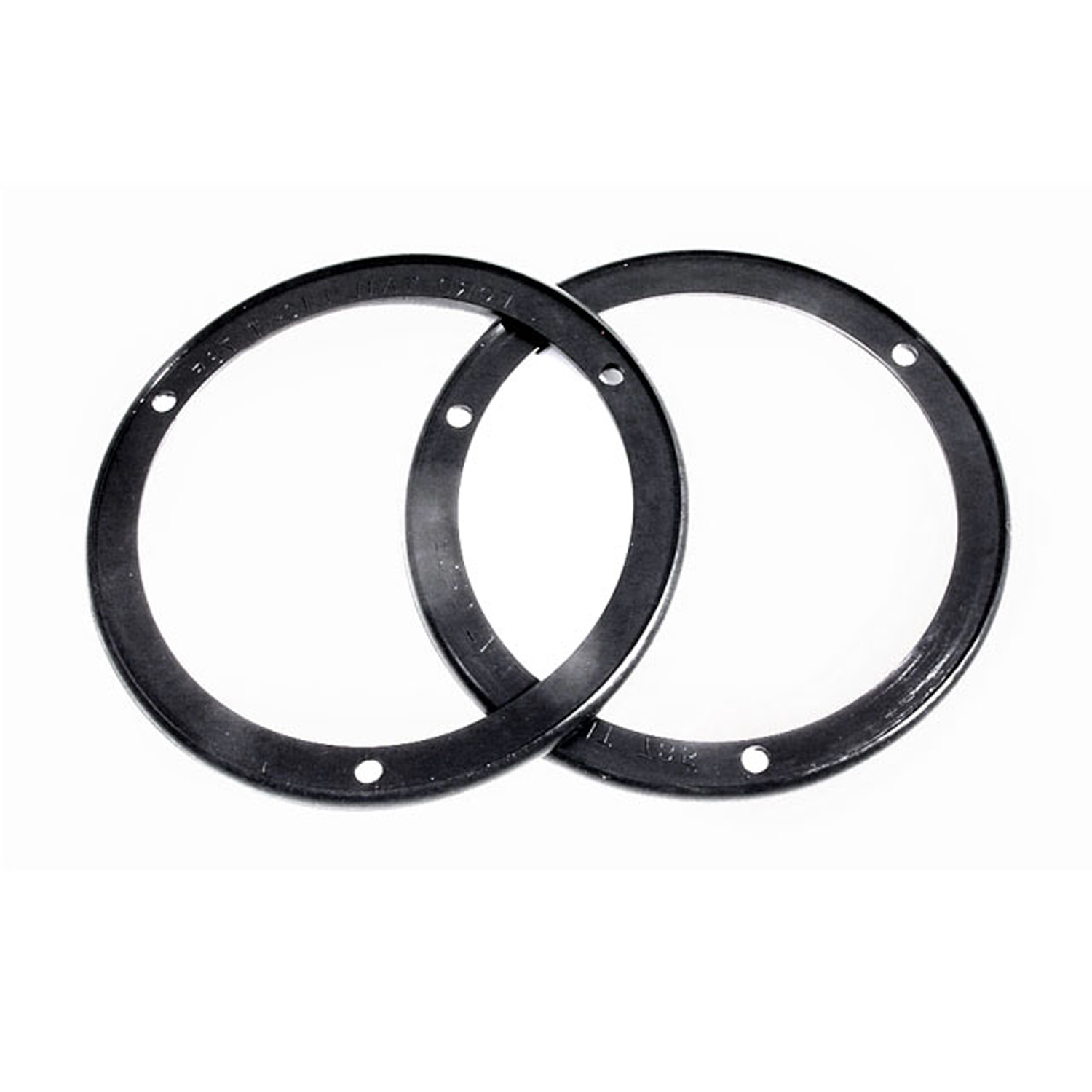 1952 Ford Mainline Tail-light Pads. 6-1/2" O.D. Pair-MP 785Tail-light Pads. 6-1/2" O.D. Pair
1952 Ford Mainline Tail-light Pads. 6-1/2" O.D. Pair-MP 785Tail-light Pads. 6-1/2" O.D. Pair 1952 Ford Mainline Clutch and Brake Arm Bumpers. Top quality reproduction-RP 31-KClutch and Brake Arm Bumpers. Top quality reproduction. Pair
1952 Ford Mainline Clutch and Brake Arm Bumpers. Top quality reproduction-RP 31-KClutch and Brake Arm Bumpers. Top quality reproduction. Pair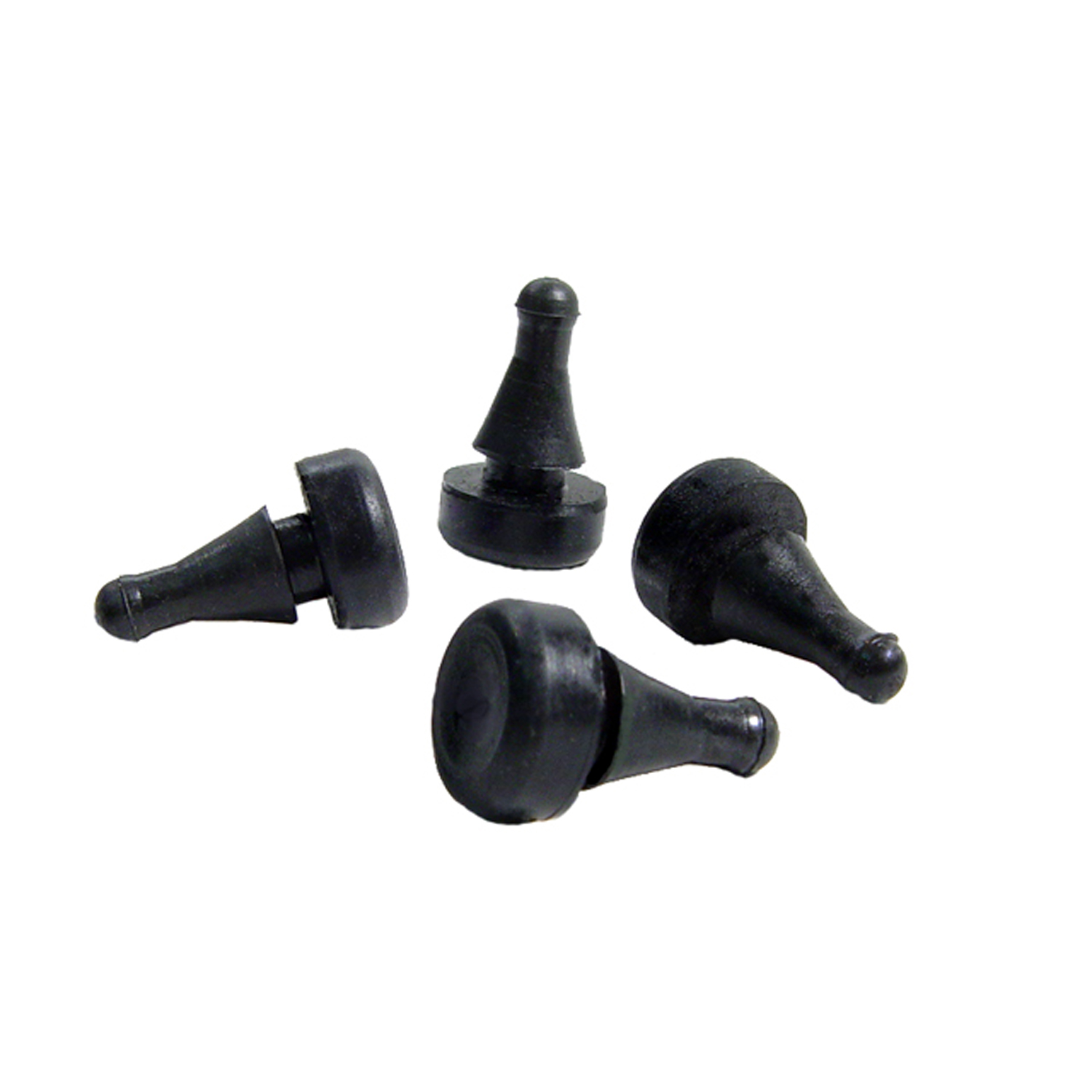 1952 Ford Mainline Hood Bumpers. 3/8" O.D., 3/4" Long. Set of four-SB 900Hood Bumpers. 3/8" O.D., 3/4" Long. Set of four
1952 Ford Mainline Hood Bumpers. 3/8" O.D., 3/4" Long. Set of four-SB 900Hood Bumpers. 3/8" O.D., 3/4" Long. Set of four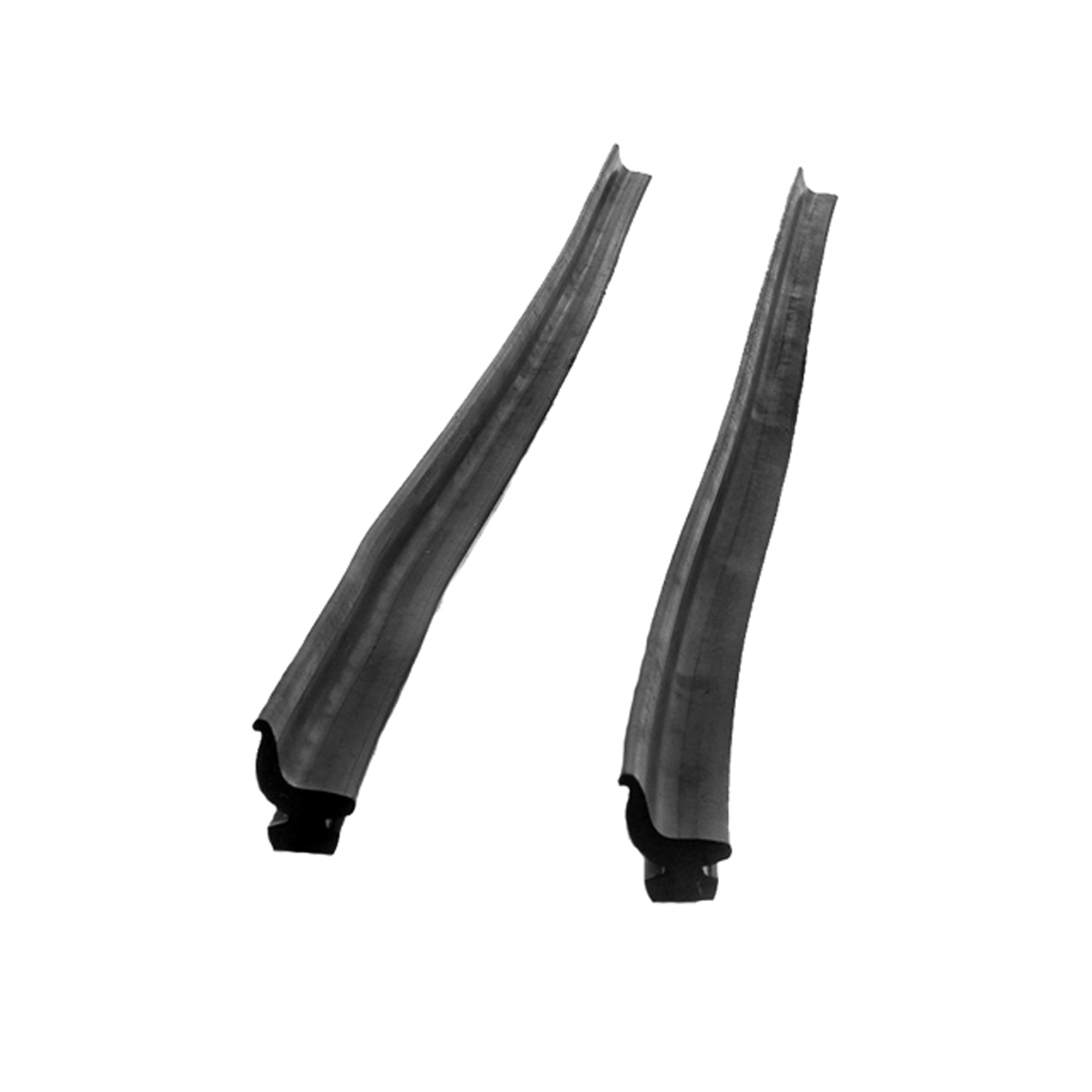 1952 Ford Mainline Rear roll-up Seal. Two 18" sections sliced into metal track-VS 4Rear roll-up Seal. Two 18" sections sliced into metal track. this foot with no steel insert. Pair
1952 Ford Mainline Rear roll-up Seal. Two 18" sections sliced into metal track-VS 4Rear roll-up Seal. Two 18" sections sliced into metal track. this foot with no steel insert. Pair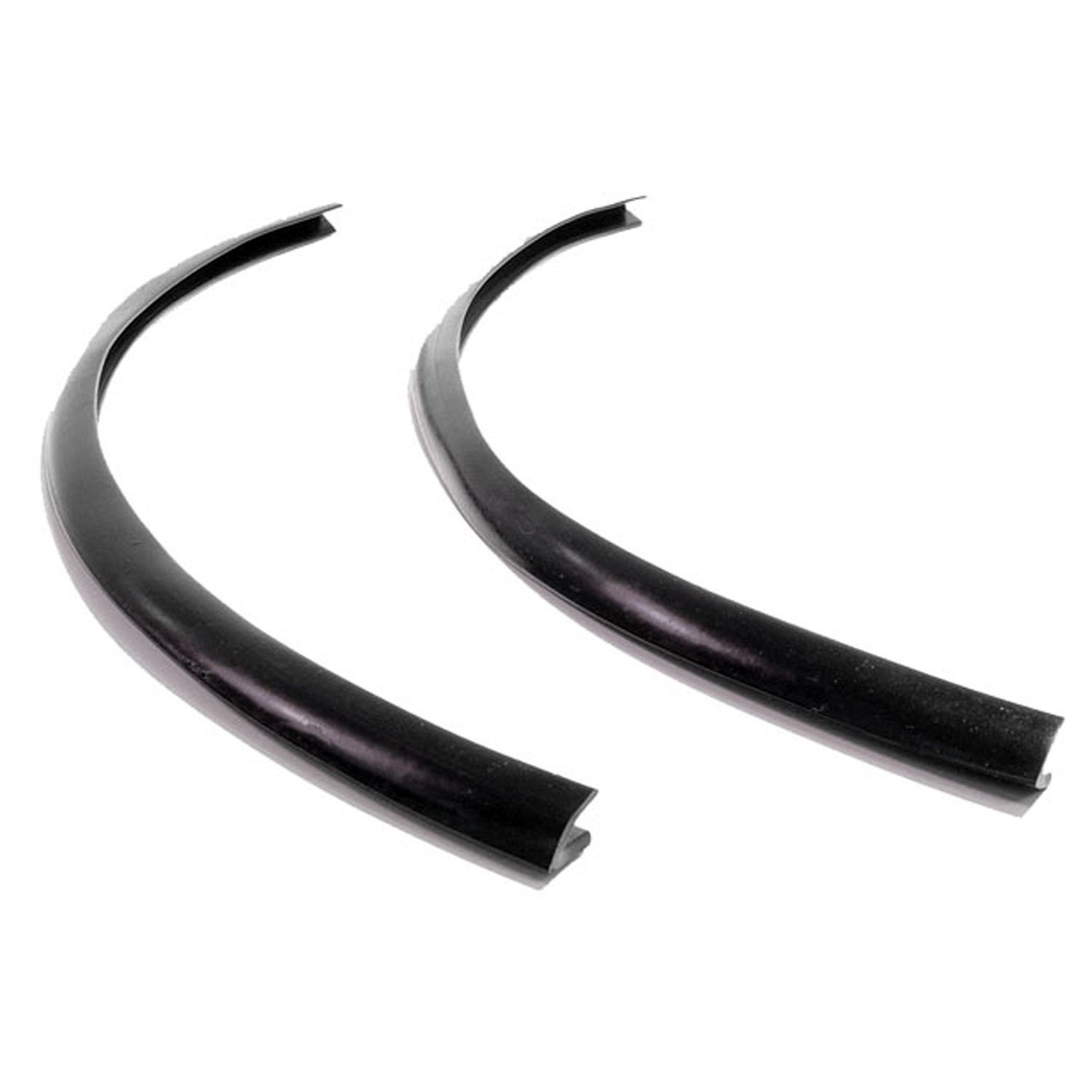 1952 Ford Mainline Vertical Seals for Vent Window. Each piece is 17" long-VS 6Vertical Seals for Vent Window. Each piece is 17" long. Pair
1952 Ford Mainline Vertical Seals for Vent Window. Each piece is 17" long-VS 6Vertical Seals for Vent Window. Each piece is 17" long. Pair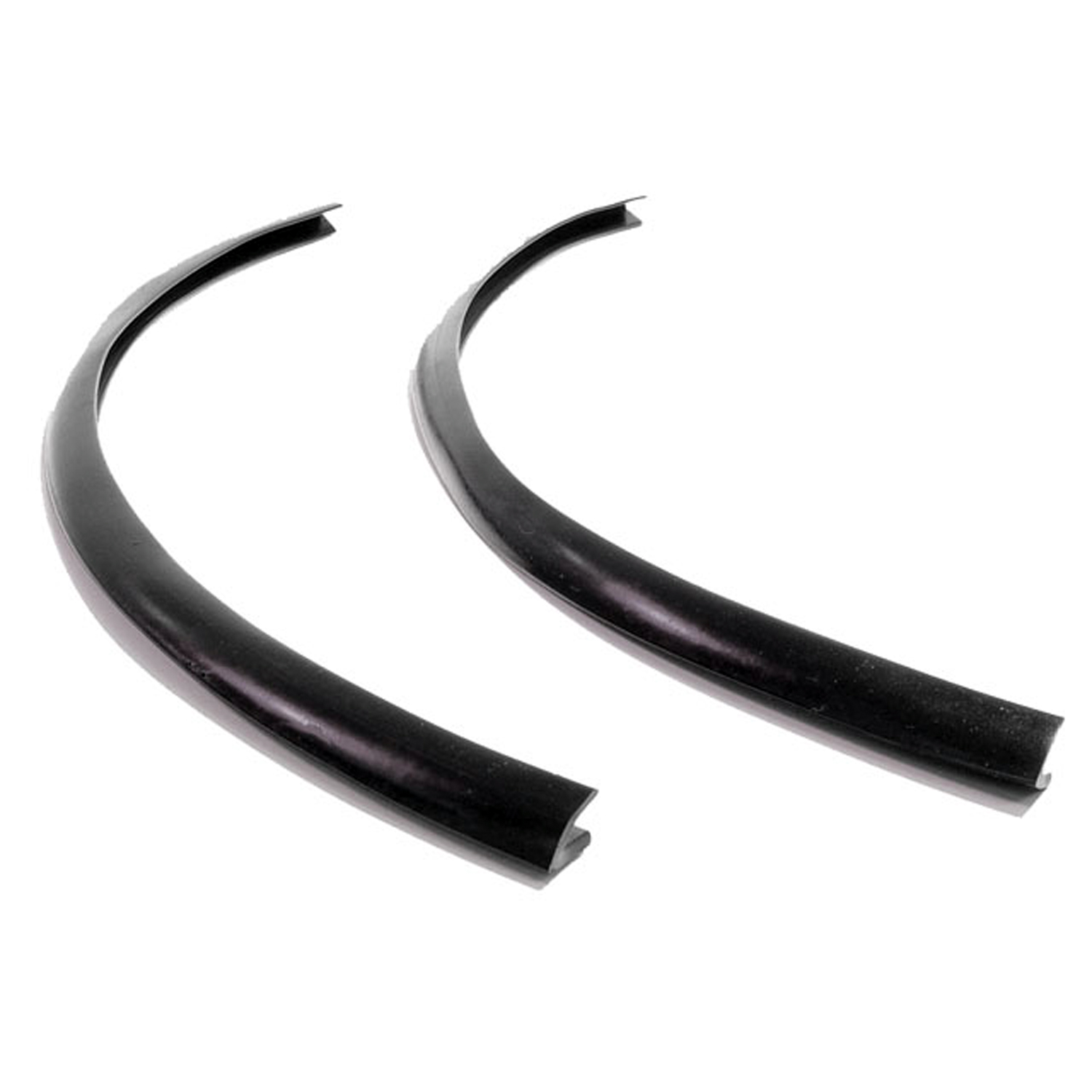 1952 Ford Mainline Vertical Seal for Vent Window. Sold by the foot.-VS 6/FTVertical Seal for Vent Window. Sold by the foot.
1952 Ford Mainline Vertical Seal for Vent Window. Sold by the foot.-VS 6/FTVertical Seal for Vent Window. Sold by the foot.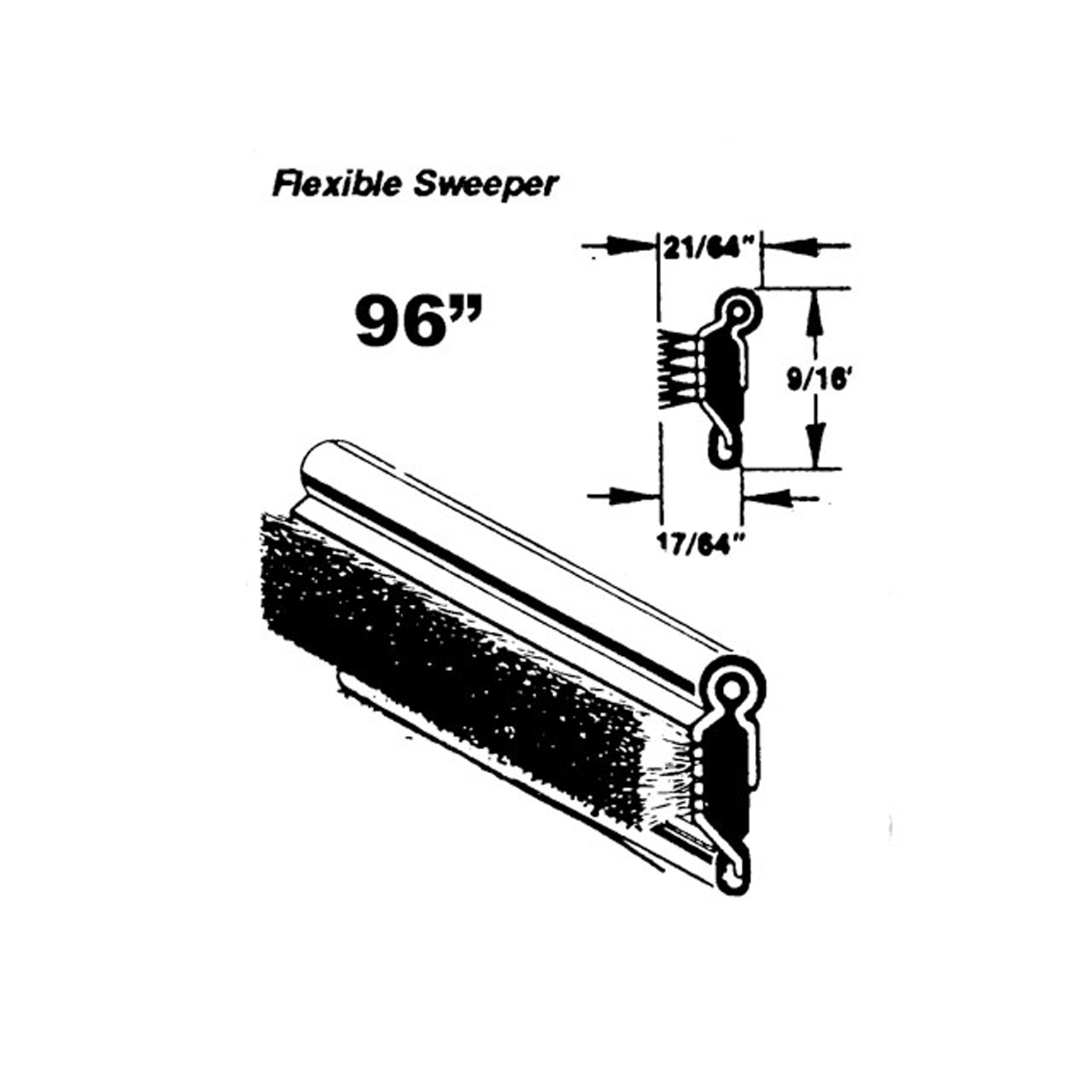 1952 Ford Mainline Flexible window sweeper. Made with stainless steel bead-WC 7-96Flexible window sweeper. Made with stainless steel bead. 96 in. long. Each. NOTE: $20 special shipping charge applies for domestic orders. Call or email for overseas shipping costs. Part can be sectioned in two or three equal lengths to reduce overseas shipping costs.
1952 Ford Mainline Flexible window sweeper. Made with stainless steel bead-WC 7-96Flexible window sweeper. Made with stainless steel bead. 96 in. long. Each. NOTE: $20 special shipping charge applies for domestic orders. Call or email for overseas shipping costs. Part can be sectioned in two or three equal lengths to reduce overseas shipping costs.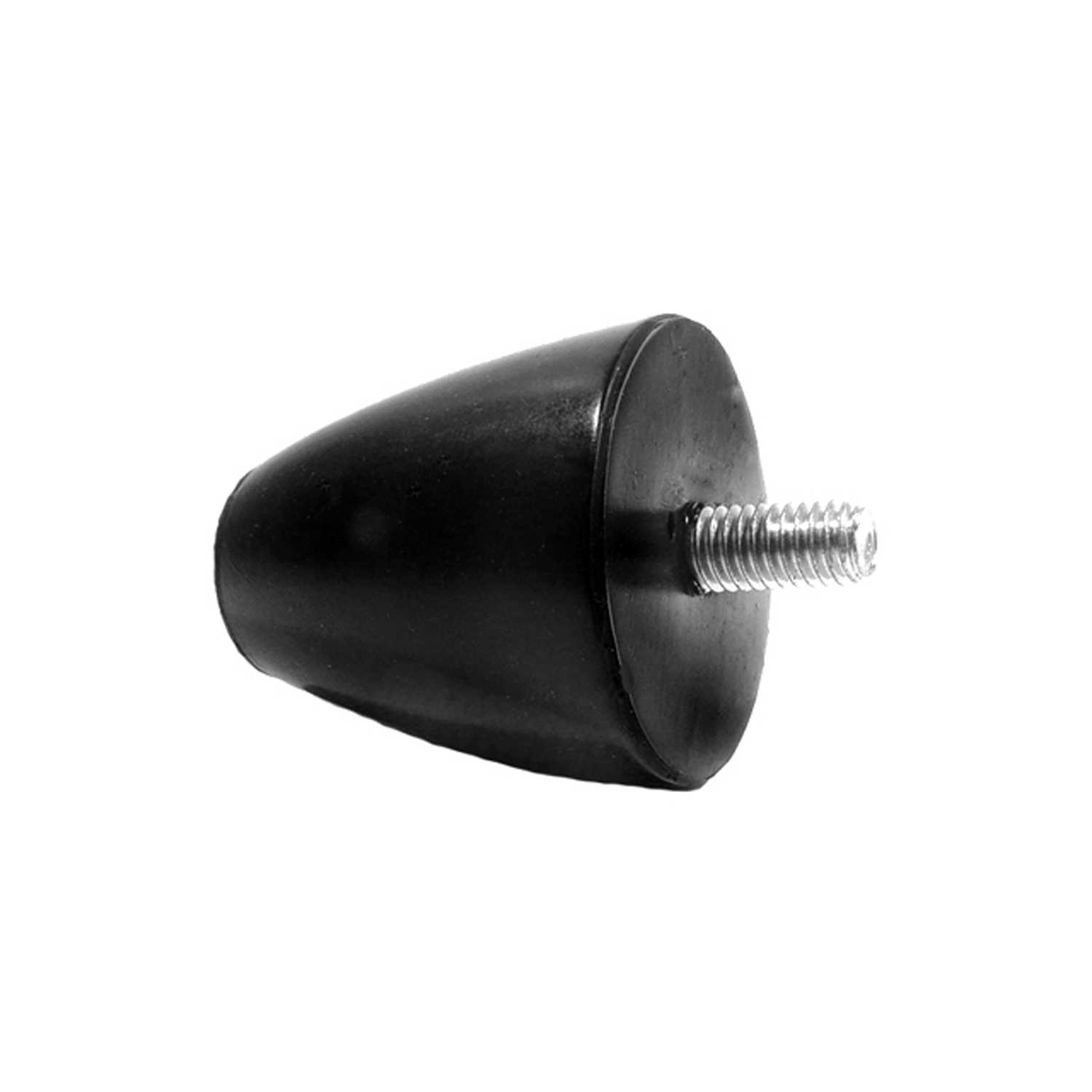 1952 Ford Mainline Front Suspension Bumper. For lower arm. 2" O.D-XB 22Front Suspension Bumper. For lower arm. 2" O.D., 2-1/8" high. Each
1952 Ford Mainline Front Suspension Bumper. For lower arm. 2" O.D-XB 22Front Suspension Bumper. For lower arm. 2" O.D., 2-1/8" high. EachWhy Choose Metro?
For over 100 years, Metro Moulded Parts has been the pinnacle of quality in classic car restoration parts. Our commitment to precision and authenticity in every component ensures a perfect fit and an OEM-level appearance.
- Expert Craftsmanship & Quality: Each part is a testament to our dedication to reliability and perfection, crafted from original designs and thoroughly tested.
- Advanced Technology: We use cutting-edge techniques to create flawless, long-lasting parts that surpass others in performance.
- SuperSoft Sponge – The Ultimate Door Seal: Not only are our door seals 30% softer than competitors', but they're also guaranteed to never leak. They effectively reduce wind and road noise, enhancing your classic car's comfort and driving experience.
- Proudly American: Our parts are a product of American craftsmanship, made in the USA with a spirit of excellence and heritage.
- Unrivaled Warranty: We back our products with a 30-year industry-leading warranty, a testament to our confidence in their quality.
Join us in preserving the legacy of classic cars with parts that are crafted for perfection, not just made.

